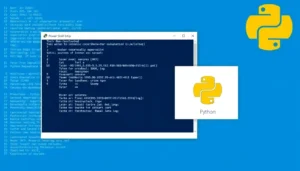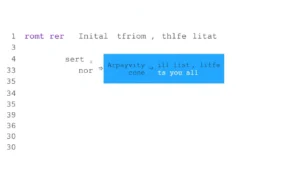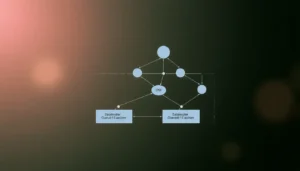Ukraine Drone Warfare: A Deadly Transformation on the Front Lines
- THE MAG POST

- Aug 19
- 8 min read

The grim realities of modern warfare have been starkly highlighted in Ukraine, where the ubiquitous presence of high-tech drones has transformed the front lines into a deadly kill zone. This technological shift has not only intensified the conflict but has also significantly complicated the already perilous task of medical evacuations, leading to increased mortality rates among wounded soldiers. The strategic landscape demands a comprehensive understanding of how these drones operate and the countermeasures necessary to protect both the injured and those dedicated to their rescue. The rise of drone warfare necessitates a re-evaluation of traditional tactics and a focus on innovative solutions to safeguard lives in this evolving battleground.
The increased deployment of first-person-view (FPV) drones, which allow operators to directly target and strike with precision, has turned vast areas into high-risk zones, making it exceedingly difficult to extract wounded soldiers. These drones are not just another weapon; they represent a paradigm shift, demanding new strategies and technologies to mitigate their impact. As medical personnel struggle to reach the injured, the urgency of the situation becomes ever more acute. Understanding the dynamics of this drone-dominated environment is critical for developing effective countermeasures and ensuring the survival of those on the front lines. The confluence of technology and human resilience will ultimately determine the outcome of this ongoing struggle.
In the relentless conflict in Ukraine, the advent of high-tech drones has dramatically reshaped the battlefield, transforming it into a perilous kill zone and significantly complicating medical evacuations. The urgency of rescuing wounded soldiers clashes starkly with the omnipresent threat of drone attacks, creating a dire situation where every second counts and the odds of survival diminish with each passing moment. This technological shift necessitates a re-evaluation of strategies and resources to safeguard both the injured and those dedicated to their rescue.
The Escalating Drone Warfare and its Impact on Ukraine's Front Line
The proliferation of high-tech drones has intensified the challenges faced by Ukrainian forces on the front lines. These unmanned aerial vehicles, equipped with advanced surveillance and targeting capabilities, have turned vast stretches of territory into high-risk areas, complicating evacuation efforts and increasing the vulnerability of both soldiers and medical personnel.
The Pervasive Threat of FPV Drones
First-person-view (FPV) drones have emerged as a particularly menacing weapon in the Russia-Ukraine conflict. Allowing operators to directly view and target their strikes, FPV drones have transformed areas up to 20 kilometers from the front lines into deadly kill zones. This has made it exceedingly difficult and dangerous to extract wounded soldiers, as traditional evacuation routes are now heavily monitored and targeted. Medical personnel report a significant decrease in gunshot wounds, with the majority of injuries now resulting from these precise and devastating drone attacks.
The precision and reach of FPV drones have forced a dramatic shift in battlefield dynamics. These drones not only inflict severe injuries but also delay critical medical care, significantly reducing the chances of survival for wounded soldiers. The psychological impact of knowing that any movement can attract a deadly strike adds another layer of stress and fear, making an already dire situation even more challenging for Ukrainian troops and medics alike. As the conflict evolves, countermeasures and innovative evacuation strategies are becoming increasingly vital.
The Dire Consequences for Medical Evacuations
The increased use of drones has severely hampered medical evacuation efforts, leading to higher mortality rates among wounded soldiers. Anesthesiologist Daryna Boiko from the “Ulf” medical service of the 108th Da Vinci Wolves Battalion, emphasizes that the primary difficulty now lies in transport, as drones can strike both the wounded and the crews attempting to rescue them. This shift marks a significant change from the early months of the conflict when evacuation vehicles could reach closer to the front lines, offering a greater chance of survival.
Commander Buhor from the 59th Brigade medical unit, who spoke anonymously for security reasons, confirmed that the conditions on the front lines have significantly increased mortality among the wounded. He noted that there is little that can be done when FPV drones are capable of destroying everything, including tanks. The munitions carried by these drones, often rocket-propelled grenades, create extreme temperatures and molten metal fragments that can cause severe injuries, amputations, and burns, making swift evacuation even more critical, yet increasingly impossible.
Adapting to the New Realities of Drone-Dominated Warfare
In response to the growing threat, Ukrainian forces are adapting their tactics and strategies to mitigate the impact of drone warfare. These adjustments include prioritizing self-aid and self-evacuation training, enhancing camouflage and mobility, and equipping vehicles with electronic warfare systems.
The Importance of Self-Aid and Mobility
Given the challenges in rapid evacuation, self-aid and buddy-aid have become crucial survival skills for soldiers on the front lines. Training now heavily emphasizes these techniques, enabling soldiers to provide immediate care to themselves and their comrades in the event of drone strikes. Commander Buhor highlighted an instance where a soldier's effective self-administered bandage was instrumental in saving his life after being wounded by a drone. However, even with these skills, the kill zone created by drones can leave soldiers stranded for extended periods, particularly if their injuries are not immediately life-threatening.
Mobility and adaptability are also essential in this new landscape of drone warfare. Medical units are forced to relocate frequently, sometimes under fire, to avoid becoming targets. This constant movement places additional strain on resources and personnel, but it is a necessary measure to protect both the wounded and the medical teams. The ability to quickly establish new stabilization points and maintain a mobile presence is vital for providing timely medical care in such a dynamic and dangerous environment.
Technological Countermeasures and Protective Measures
To counter the threat of drones, Ukrainian forces are investing in electronic warfare (EW) systems designed to disrupt drone operations. These systems can jam drone signals, reducing their effectiveness and providing a degree of protection for evacuation vehicles and medical facilities. Additionally, camouflage and concealment techniques are employed to minimize visibility and reduce the likelihood of attracting drone strikes.
Evacuation crews are now equipped with body armor and helmets as standard gear, reflecting the increased risks they face. Efforts are focused on limiting movement and using the terrain to their advantage to avoid detection. Despite these measures, the threat remains ever-present, and medical personnel must constantly balance the need to provide care with the imperative to protect themselves from harm. The integration of advanced technologies and protective measures is crucial for maintaining operational effectiveness in the face of relentless drone warfare.
The Human Cost: Stories from the Front Lines
The realities of drone warfare are starkly illustrated through the experiences of soldiers and medical personnel on the front lines. Their stories of resilience, adaptation, and the constant struggle to save lives amid overwhelming challenges highlight the profound human cost of this conflict.
Artem Fursov's Ordeal: A Testament to Resilience
Artem Fursov, a 38-year-old soldier, was wounded by an explosive dropped from a drone and had to walk several kilometers to reach safety, finally arriving at a medical post five days later. His survival is a testament to his resilience and the effectiveness of self-aid. Fursov’s account underscores the brutal reality of the front line, which he describes as a “robot war” where “you can’t even lift your head.” His ordeal highlights the critical importance of self-reliance and the unwavering spirit of Ukrainian soldiers in the face of relentless attacks.
Fursov's experience also emphasizes the psychological toll of constant drone surveillance and attacks. The fear of being targeted at any moment creates a pervasive sense of anxiety and stress, impacting soldiers' mental health and overall well-being. Despite these challenges, Fursov and his comrades continue to fight, driven by a determination to defend their homeland and protect their fellow soldiers. Their stories serve as a powerful reminder of the human cost of war and the extraordinary courage displayed by those on the front lines.
Valentyn Pidvalnyi's Perspective: A Harder Reality
Valentyn Pidvalnyi, a 25-year-old assault soldier wounded in the back by shrapnel, shared that enduring one day on the current front lines is more challenging than a month in 2022. His statement reflects the deteriorating conditions and the increased intensity of drone warfare. Pidvalnyi emphasized the critical need to destroy the enemy to prevent further territorial losses, highlighting the stakes of the conflict and the sacrifices made by Ukrainian soldiers.
Pidvalnyi's perspective underscores the relentless pressure and constant danger faced by infantry units. The shift from traditional combat to drone-dominated warfare has created a more lethal and unpredictable environment, demanding greater vigilance and adaptability. Despite the immense challenges, Pidvalnyi and his fellow soldiers remain committed to their mission, understanding that their efforts are essential for safeguarding their country and its people. Their unwavering dedication is a testament to the resilience and determination of the Ukrainian armed forces.
The Ever-Evolving Battlefield: Challenges and Future Directions
As the conflict evolves, the challenges posed by drone warfare continue to grow, necessitating ongoing adaptation and innovation. The future of warfare in Ukraine will likely depend on the ability to develop effective countermeasures, enhance medical evacuation capabilities, and address the psychological toll on soldiers and medical personnel.
The Need for Advanced Countermeasures
The development and deployment of advanced drone countermeasures are crucial for mitigating the threat posed by FPV drones. This includes improving electronic warfare systems to disrupt drone signals, deploying anti-drone technology to intercept and neutralize drones, and enhancing radar and detection systems to provide early warning of incoming attacks. Investing in these technologies will provide Ukrainian forces with a greater degree of protection and enable safer medical evacuations.
In addition to technological solutions, strategic adaptations are also necessary. This involves refining camouflage and concealment techniques, improving battlefield awareness through enhanced surveillance and intelligence gathering, and developing more resilient communication networks. By combining advanced technologies with innovative strategies, Ukrainian forces can better defend against drone attacks and maintain operational effectiveness in the face of evolving threats.
Enhancing Medical Evacuation Capabilities
Improving medical evacuation capabilities is essential for reducing mortality rates and ensuring that wounded soldiers receive timely care. This includes investing in armored evacuation vehicles equipped with electronic warfare systems, establishing more mobile and decentralized stabilization points, and training medical personnel in advanced trauma care techniques. Streamlining evacuation protocols and enhancing coordination between medical units and frontline troops can also significantly improve outcomes.
Furthermore, exploring alternative evacuation methods, such as unmanned ground vehicles (UGVs) and advanced aerial drones for casualty extraction, could provide safer and more efficient means of transporting the wounded from the front lines. These technologies would minimize the risk to medical personnel and reduce the time required to reach stabilization points, ultimately increasing the chances of survival for critically injured soldiers. The integration of innovative technologies and improved protocols is vital for enhancing medical evacuation capabilities and saving lives.
The Final Solution: Adapting to Drone Warfare in Ukraine
The transformation of Ukraine's front line into a deadly kill zone by high-tech drones presents unprecedented challenges for soldiers and medical personnel. Adapting to this new reality requires a multi-faceted approach that includes technological innovation, strategic adjustments, and a relentless focus on protecting those who serve on the front lines. By embracing these changes, Ukraine can mitigate the impact of drone warfare and continue its fight for survival.
Aspect | Impact of High-Tech Drones | Adaptive Strategies |
Battlefield Dynamics | Transformation into kill zones, complicating evacuations | Prioritizing self-aid and mobility |
Medical Evacuations | Increased mortality rates due to delayed or impossible rescues | Investing in armored evacuation vehicles and decentralized stabilization points |
Technological Warfare | Dominance of FPV drones, reducing chances of survival | Deploying electronic warfare systems and anti-drone technology |
Soldier Welfare | Psychological toll of constant drone surveillance | Providing enhanced training and mental health support |






















































Comments